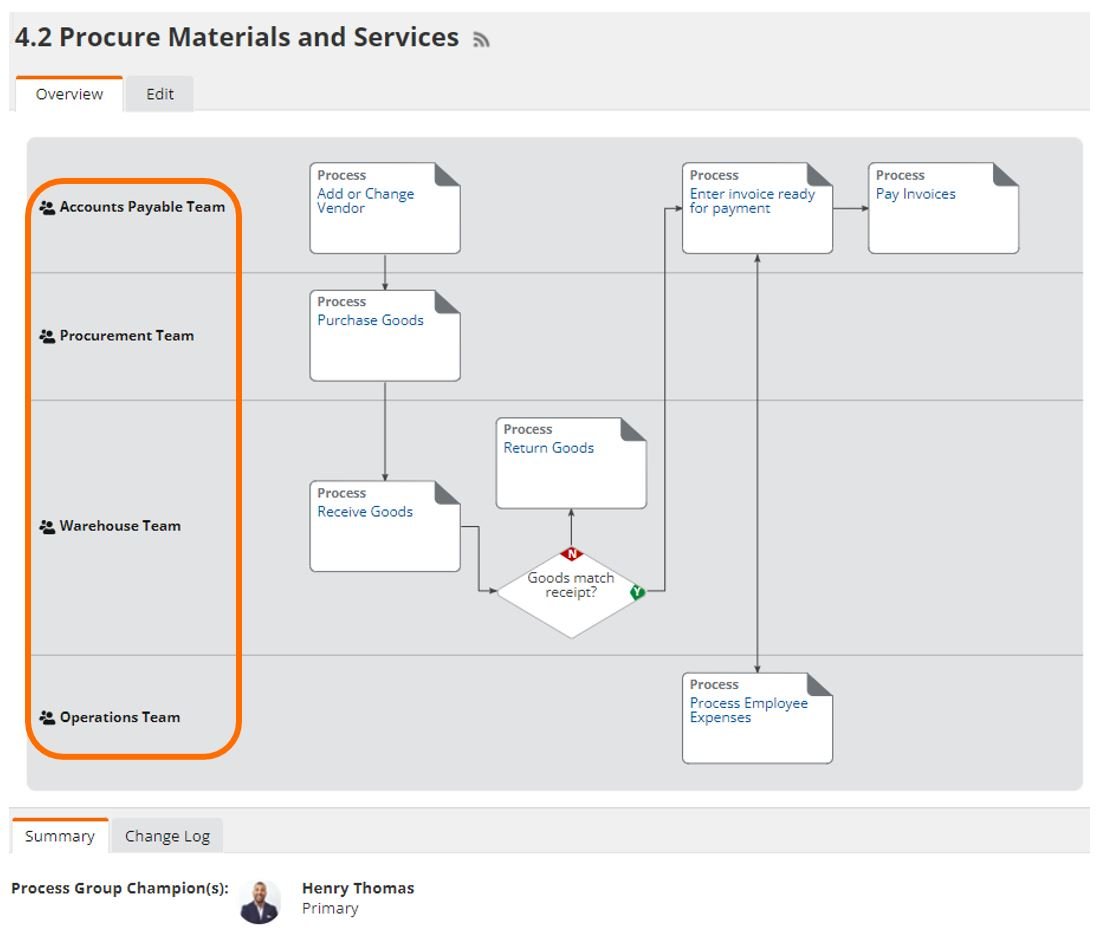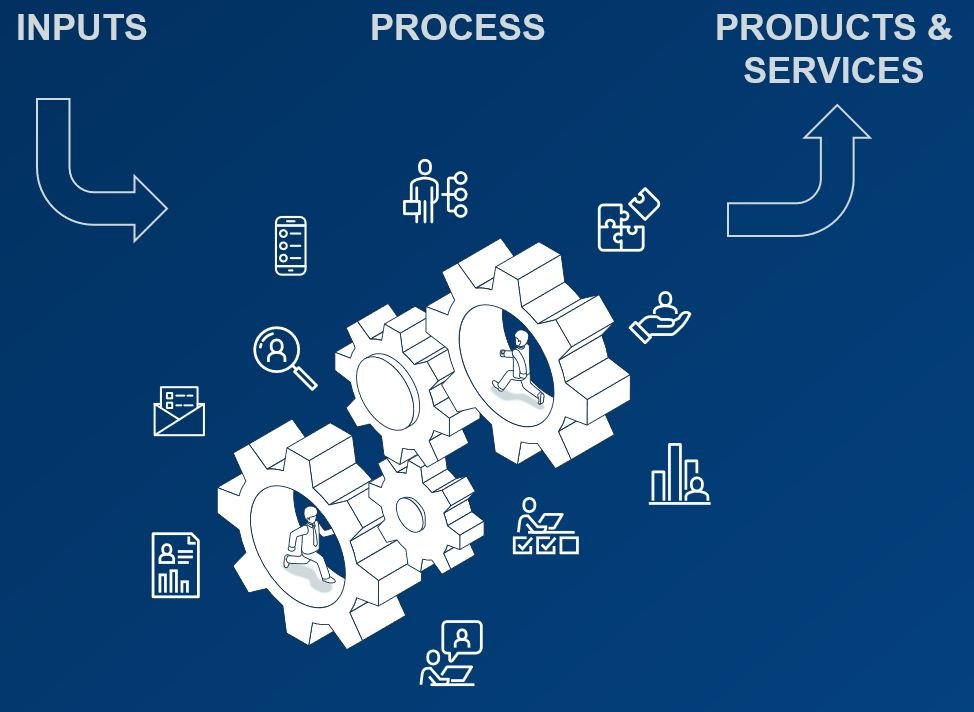Process-focused management and navigating change
What does exercise have to do with it?
As I am getting older, I have been confronted with some of the inescapable facts of aging. Body parts that I never even knew existed will randomly hurt. Injuries take longer to recover from than they used to. And, it is a whole lot easier to gain weight now than it was a decade ago.
Although it is not possible to change the fact that my body is slowly decaying, it is possible to slow down that decay to some extent through a good diet and regular exercise. Recently, I have taken up the challenge to do just that – to change my diet and exercise habits with the intent of becoming healthier for myself and for those who depend on me.
As part of this transformation, I have begun to exercise regularly. If you have made similar commitments, then you know how much information is available out there regarding exercise. And each “expert” has their own slightly varied opinion. Some say that cardiovascular exercise is most important. Others claim that resistance training and weightlifting are most important. Still others say a combination of both is important.
When we think about weightlifting in particular, there are generally two categories of exercise to consider. The first is compound movements and the second is isolation movements.
Compound movements are multi-joint movements that work several muscle groups at one time. Take, for example, squats. Squats engage multiple muscles such as the quadriceps, hamstrings, calves, core, lower back, and glutes. Squats are about as close as you can get to a total body workout in a single exercise. The squat is considered by many to be the ultimate compound movement.
On the other hand, isolation movements, consistent with the name, are those single-joint exercises that only work one muscle at a time. An example of an isolation movement focused on building leg muscles is the quadriceps extension.
But unlike squats – the quad-extension is very limited in its area of focus – it is designed to target only the quadriceps. With each rep of the quad-extension, you are only exercising that single muscle group. Contrast that again with the squat – with each rep of the squat, you are exercising all of those different muscle groups – the quadriceps, certainly. But also, your hamstrings, calves, lower back, and glutes.
For this reason, most athletes will build an exercise program focused on compound movements. Most of their time will be dedicated to performing those exercises which are multi-joint, working many muscle groups at a single time with the intent of increasing the total agility of their body.
You may be wondering – what in the world do isolation and compound movements have to do with business agility? Well, when we consider the different ways in which an organization approaches managing their business, we see something very similar to how different individuals might go about developing an exercise plan.
Some organizations are managed in isolation – they divide the business up into various functions such as HR, IT, Sales, Marketing, so on and so forth. These functions then design and execute their work in a silo – they have blinders on, as it were, insulating themselves from the work that happens around them – the work that so often impacts their own responsibilities. This type of work system is often referred to as a functional management system.
A functional management system treats a business as a group of individual functions – essentially, the business becomes nothing more than the sum of all its parts.
Other organizations choose to take a cross-functional approach to managing their business. They identify how the various functional departments work together to perform key business processes and generate value for the customer - and this then become the paradigm through which they view and manage the business. Cross-functional management can rightly be called process-focused management.
Process-focused management is built around the truth that an organization is more than simply the sum of its parts. It’s about how those parts work together to achieve a common end. It focuses on synergy and collaboration.
Just as compound movements allow you to complete your workout faster and more effectively – process-focused management allows a business to execute their work and generate more value faster and more effectively. Process-focused management helps foster agility within an organization – enabling them to adapt faster and more successfully.
The need for agility – why does it matter?
Business agility is ever-becoming more important. Increasing competition, growing customer demands, and changing market conditions are constantly challenging organizations to adapt or wither away. The traditional way of managing an organization in functional silos does not promote the level of agility required to stay competitive.
Think to our not-so-distant past in 2020 and how, literally overnight, businesses had to change the way that they operated. How many of our organizations were caught off-guard and completely unprepared to adapt and change quickly when constraints outside of our control demanded that a large percentage of our workforce begin to operate remotely?
How often did you work from home in 2022?
Agility mattered in 2020. Companies who understood their value-creating processes and had established healthy cross-functional work practices were more prepared to weather that storm. They were operating with a distinct advantage over and above organizations employing a functional management system.
Although the pandemic response has normalized as of late, the changing economy threatens to be the next disruptor to routine work practices. As inflation rises and our customers begin to tighten their purse strings, are we prepared to continue to innovate and provide new and better value to our clients? Are we prepared to operate with decreased budgets and increasing competition?
Agility matters in 2023 and beyond. Organizations who employ process-focused management are better suited to adapt and change than are organizations operating on a functional management system.
Becoming agile – adjust your view
So, how do we begin to become more agile as a business – how do we shift to process-focused management?
Well, just as an archer lines up a target within his sights before releasing the string and launching the arrow – so a business must line up it’s sights on the appropriate target before launching it’s operations.
And what is the target our businesses are aiming for? Certainly, things like profitability, shareholder return, and client satisfaction are in view here – and I think we can appropriately summarize these as “value.” Businesses exist to create value – specifically, value for their clients. And generating value effectively will naturally result in profitability, shareholder return, and client satisfaction.
So, becoming agile demands that we understand our target – that we understand, in the first place - the value required by our customers, and in the second place – our methods for delivering on that value.
When we have customer value in the foreground, we can begin to change the way we view and manage our organizations. Now, please note, I am not suggesting that we abandon functional departments altogether. This is generally untenable for most organizations. Instead, I am suggesting that we work to establish a customer-centric, process-focused management system which leverages both cross-functional process ownership and existing functional management resources.
The procure-to-pay process involves multiple departments working cross-functionally
Take for example, the procure-to-pay process. This end-to-end process can involve multiple functional departments such as Accounts Payable, Procurement, Warehousing, and Operations. A traditional functional approach to management fails to see how the various parts work together, while process-focused management prioritizes the dependent relationships that exist between the various functions as they work in harmony to execute the procure-to-pay process in an effective manner. In a process-focused management model – functional oversight would still exist in each department – AP, Procurement, Warehousing, and Operations – but there would also be oversight at the process level – a Process Owner or Champion who can see to the cross-functional performance of the procure-to-pay process.
As Rummler and Brache comment in their book Improving Performance:
“In a process-driven environment, each functional manager is still responsible for achieving results, allocating resources, and developing policies and procedures. The only difference from a traditional (purely vertical) organization is that each function is measured against goals that reflect its contribution to processes….. Because Process Management fosters symbiotic, ‘we’re all in this together’ relationships between suppliers and customers, functional mangers may need assistance in managing the ‘white space.’ That assistance is available from the Process Owner.”[1]
In a process-focused management system – functional managers work in harmony with process owners to ensure effective value creation. Traditional fiefdoms are broken down and replaced with an atmosphere of teamwork and collaboration because all parties have a stake in overall process performance.
Value and value creation – a worthwhile tangent
As we have discussed before on this blog - “value” is the products and/or services that your customers are willing to pay for. This value is created by the execution of business processes.
Processes create value - pretty simple, huh?
Organizations do not provide the best value to their clients by simply having good – or even great – individual functional departments. They provide the best value when those functional departments are synchronized and working together – transforming inputs into useful outputs from the beginning of the process until the customer receives the created value.
So, understanding our processes – how value is created – is absolutely central to establishing a process-focused management system.
Process-focused management – what is involved?
There are two activities I want you to consider as you contemplate a shift to process-focused management.
First, if you are going to manage from a process-focused perspective, you should know your processes. And secondly, you should manage your processes.
As we will discuss towards the end of our session, these two activities naturally promote business agility. In other words, the changing of your processes – when change is demanded – whether from forces outside the business, or a change in strategy from within the business – change is more feasible when you know and are actively managing your key end-to-end processes.
But before we get there, let us examine these two central activities in more detail.
Knowing your processes sounds fairly straightforward, but take a moment to think and answer these rhetorical questions:
What value do you produce for your customers?
What steps does your organization perform to generate that value?
What groups and individuals are involved in completing those required steps?
Where are the key decisions made?
What conditions exist that might disrupt the execution of those steps?
Unless you have gone through this exercise before, it is unlikely that you know complete answers to any of these questions – much less, all of them. The intentional activity of knowing your processes will help fill any knowledge gaps that may exist within the organization related to why, how, when, where, and by whom value is created.
To truly know your processes, you will need a way to extract them from the ether and visually represent them for everyone to see and examine. Only when we perform this activity can we begin to accurately answer those key value-creating questions. This is where a process framework comes in. A process framework – also called a process architecture – is a mechanism for identifying and arranging all the existing processes within an organization. It is constructed in such a way as to help show relationships and dependencies between those processes – both horizontal and vertical.
I will refrain from rehashing the details of a process framework in this post. But you can read more about process frameworks here: Using a framework to identify and organize your processes
The key takeaway is that a process framework is essential to creating a shared visualization of how value is generated within your business. Answering those rhetorical questions we asked above becomes much easier once we have employed a process framework. We can now know our processes.
Well, once we have identified our processes and visualized them in a framework – we need to manage our processes – we need to establish ownership over those key end-to-end processes. As we quoted earlier from Rummler and Brache, process ownership is central to managing the “white space” that exists in an organization due to the narrow focus that functional management teams have.
I would submit to you that ownership of your processes should be established at the top three levels – level 1 categories – level 2 groups – and level 3 processes. And just as each descending level is getting closer to the frontline worker, process ownership should also move more towards the frontline as we descend from level 1 to level 3.
Ownership is necessary to manage your value-creating processes
Regarding the category and group owners – they will typically be higher up in the organization and carry more authority and influence than do the level 3 process owners.
For example, a level 1 or 2 process owner will generally be seen as the final decision maker – they are where the buck stops regarding their process. They have a high stake in the success or failure of their process and will normally have a portion of their compensation tied to its performance. Level 1 and 2 process owners also hold positions that afford them a broad view across an organization. They have key relationships with other upstream and downstream process owners and are closely tied-in with strategy development and execution within the business. All of these factors give level 1 and 2 process owners a unique ability to ensure healthy process designs and performance.
Conversely, level 3 process owners will be closer to the frontline of a business. They are oftentimes individual contributors who are subject matter experts in their particular field. They know the ins and outs of the processes they perform and are thus uniquely qualified to manage organizational processes. Level 3 process owners are usually seen as top performers and known to be “gurus” in their functional area within the business. As with level 1 and 2 process owners, it is helpful to incentivize process ownership at level 3 by linking that work to their compensation.
One important note on selecting process owners at each level. As has been said – a chain is only as strong as its weakest link. The same can be said of process ownership. A single process owner who is not interested, or who does not have the time or capacity required, or who lacks the appropriate authority or expertise will slow down your transition to process-focused management.
I would encourage you to vet your potential process owners thoroughly. Take the effort to craft responsibility statements which outline expectations that includes items such as involvement in current state process design, process improvement initiatives, process performance monitoring, and organizational process management forums. Be clear with your process ownership candidates regarding expectations and ensure they have the ability to say “no” if they cannot fulfill those responsibilities. Process owners who are excited about the shift in management philosophy and practice are much more likely to succeed than process owners who are “voluntold.”
So, we have reviewed two key activities required for the transition from a functional management system to process-focused management – firstly, knowing our processes using a process framework that highlights both horizontal and vertical process relationships, always keeping value creation in the foreground – and secondly, managing our processes by establishing process owners who are actively involved in fostering collaboration amongst the various functional groups who participate in their process, all-the-while ensuring the effective performance of said process.
Exercising our newfound agility
This leads us, finally, to exercising your newfound agility. With the shift to a process-focused management system comes the ability to adapt, to change, to innovate faster and more effectively than you have in the past.
There are many signals that can trigger change and initiate business agility. Some of these signals – like those experienced in 2020 and even during these last few months with increasing inflation and economic concern – some of these signals are outside of the control of any one organization. Other change signals are driven from internal sources. Perhaps a process is not performing to design. Or organizational leadership has identified a strategic opportunity in the marketplace and the business must adapt to take advantage of that.
Regardless of where these change signals come from – we can be sure that they will occur. And when they do, we must be agile. We must be ready to adapt and improve our operations - the way we generate value - the way we execute our business processes. Having made the shift to process-focused management, you are in a good position to do just that. Adopting a time-tested improvement methodology such as Plan – Do – Check – Adjust, fits quite nicely into this scheme of process-focused management.
Process owners and other decision makers plan process designs that support organizational strategy – processes are executed and results are monitored. Those results are measured and any gaps between the plan and performance are identified. Those gaps are then explored with root cause analysis. Countermeasures are designed and tested. Finally, the process is adjusted and updated to account for these new countermeasures. The new version of the process is then deployed and the PDCA cycle starts all over again - the agility enjoyed in this future state having been achieved by shifting from traditional functional based management to value-centered, process-focused management.
Conclusion
I began this blog by looking at the differences between compound exercises and isolation exercises. Compound exercises are those that work multiple muscle groups at a single time – they promote total body agility and are likely to lead to more athletic success than simply stacking various isolation exercises together.
Similarly – functional management within a business is so often focused on increasing the performance of singular functions – isolated departments within an organization. It does so to the detriment of the value-creating work that is central to the survival of the organization. Conversely, process-focused management seeks to synergize individual functions into a cohesive, cooperative whole – working in unison to effectively create the value that customers desire.
Central to process-focused management is knowing and managing your processes. We looked at how a process framework can illuminate how value is actually created by your business. Process ownership then comes in and focuses on maximizing value creation by monitoring process performance, managing the organizational gaps, and seeking to improve the process when change is needed.
My hope is that this blog has encouraged you to explore in more detail how process-focused management can help your organization achieve business agility. I wish you much success in shifting to process-focused management in 2023!
[1] Geary A. Rummler and Alan P. Brache, Improving Performance: How to Manage the White Space on the Organizational Chart (Jossey-Bass Publishers, San Francisco, 1995), 170.




